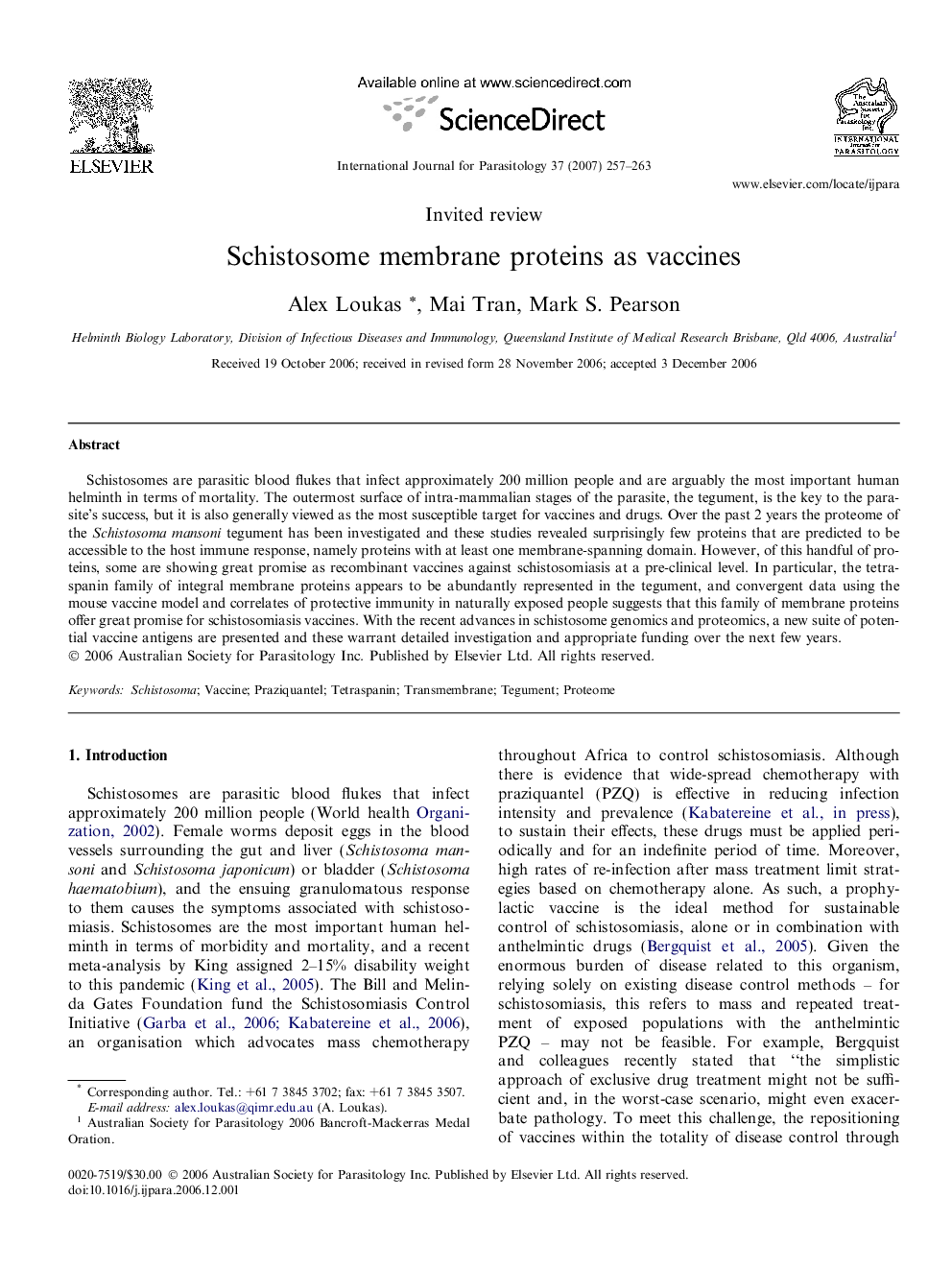| Article ID | Journal | Published Year | Pages | File Type |
|---|---|---|---|---|
| 2436994 | International Journal for Parasitology | 2007 | 7 Pages |
Schistosomes are parasitic blood flukes that infect approximately 200 million people and are arguably the most important human helminth in terms of mortality. The outermost surface of intra-mammalian stages of the parasite, the tegument, is the key to the parasite’s success, but it is also generally viewed as the most susceptible target for vaccines and drugs. Over the past 2 years the proteome of the Schistosoma mansoni tegument has been investigated and these studies revealed surprisingly few proteins that are predicted to be accessible to the host immune response, namely proteins with at least one membrane-spanning domain. However, of this handful of proteins, some are showing great promise as recombinant vaccines against schistosomiasis at a pre-clinical level. In particular, the tetraspanin family of integral membrane proteins appears to be abundantly represented in the tegument, and convergent data using the mouse vaccine model and correlates of protective immunity in naturally exposed people suggests that this family of membrane proteins offer great promise for schistosomiasis vaccines. With the recent advances in schistosome genomics and proteomics, a new suite of potential vaccine antigens are presented and these warrant detailed investigation and appropriate funding over the next few years.
